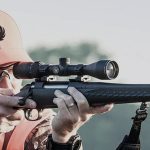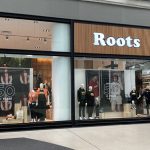Foot Locker, Inc. reported that fiscal third quarter  sales came in below expectations as a weak U.S. mall environment was joined by tough sales results coming out of Europe and a flat Canadian business. Australia was the lone bright spot, but the worlds-largest-athletic-footwear-retailer also sees bigger things ahead for Eastern Europe and the Middle East. The mid-single-digit decline in comparable store sales, which had the expected deleveraging effect on margins and fixed expenses, combined with a non-cash impairment charge and expenses associated with closing unproductive stores.
sales came in below expectations as a weak U.S. mall environment was joined by tough sales results coming out of Europe and a flat Canadian business. Australia was the lone bright spot, but the worlds-largest-athletic-footwear-retailer also sees bigger things ahead for Eastern Europe and the Middle East. The mid-single-digit decline in comparable store sales, which had the expected deleveraging effect on margins and fixed expenses, combined with a non-cash impairment charge and expenses associated with closing unproductive stores.
Third quarter net income would have been $33 million, or 21 cents per share, without the charges, or just over half the net income posted in the year-ago quarter. Merchandise margins improved 10 basis points versus Q3 last year, reflecting a 30 basis point decline in the U.S. stores and a 40 basis point improvement in the international stores.
Looking at the third quarter business by division, the U.S. retail business comped down in the mid-single-digits for the period, while Footlocker.com sales increased in the low-single-digits. International comp store sales also declined in mid-single-digits, with the weakest results being in Europe. Canadian sales were flat while Foot Locker Australia increased in low-double-digits.
Comparable store sales decreased in the low- to mid-single-digits in August and decreased in mid-single-digits in September and October.
The consolidated U.S. store business posted a 5.2% comp store decline for the period, with footwear sales decreasing 2.8% and apparel and accessory sales decreasing almost 12%. The men's business decreased low-single-digits and women's decreased mid- to high-single-digits, while the kid's business increased in low-single-digits. Men's basketball sales were “slightly positive,” driven by strong sales of Brand Jordan and Jordan Retro assortments. Men's running was called out as the strongest footwear category, with comp store sales up nearly 10% for the quarter.
Company Chairman and CEO Matt Serra said that Nike Shox running and some Nike Air Max products, ASICS, and adidas Bounce were key performers for the period. He also said they generated “strong sales gains” in the skate category, led by both adidas and Nike. He said the classics category continued to trend down with the exception of premier assortments from Nike, as well as Converse canvas. “The moderate price classic category is at the heart of our overall shoe decline in the U.S. business,” said Mr. Serra in a conference call with analysts.
Foot Locker also saw weakness in the casual category, with most of the downturn coming from low profile fashion athletic product. Serra said the low profile look had “hit the wall.” Boot sales were also described as “extremely weak,” but the decline was seen as weather related, rather than a fashion shift. Average selling prices in footwear in the U.S. increased in the mid-single-digits, reflecting both a “lower markdown rate” versus last year and a mix of shift towards higher priced footwear.
Sales of both license and branded apparel continued to be very soft, but the retailer did say they continue to have better success with their private label apparel, particularly in short and polo programs. Nike Pro apparel was called out as a positive exception to the tough branded business, which may be a major reason why Foot Locker will start to roll out Under Armour in their stores this coming spring. They will also support the Under Armour cross trainer launch next year and are expected to carry UA cleats at Champs.
In Europe, Foot Locker said they are sticking with a more conservative promotional cadence in order to maximize profits in the region. In the near-term, Serra said comp store sales “continue to be pressured.” He said they saw “encouraging signs” that higher-end technical running footwear is coming back into fashion. Europe posted “very strong gains” in the running category on various assortments from Nike and they have had strong customer reaction to the MegaBounce shoes from adidas. The canvas business with Converse was also called out as “extremely strong.” The slowdown in the fusion category was the said to be the primary factor in the footwear decline in Europe. Looking towards the fourth quarter, Serra said the number of pairs of fusion (low profile) footwear they expect to receive in Europe will be down 40%, offset by an 80% increase in running shoes.
Canadian division profit was said to be “very much in line with last year” and continued to run at a very solid double-digit division margin rate. The combination of strong sales per square-foot, consistent markdown rates, effective inventory control, and good expense management were all called out as part of a “well-balanced formula for success in this division.”
In the Middle East, the franchisee opened their second franchise store in the Kuwait market, and now operates nine stores in the market. They plan to open an additional 10 stores next year, reaching 75 stores in several years.
DotCom sales and profits were essentially flat for Q3. For the full year, the division is expected to post a “solid profit gain” with the division margin rate of about 14%.












